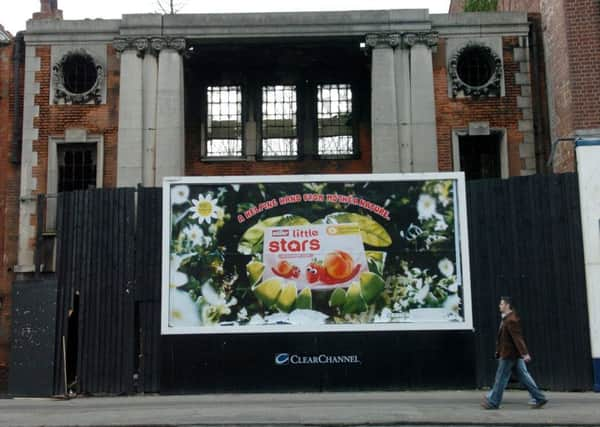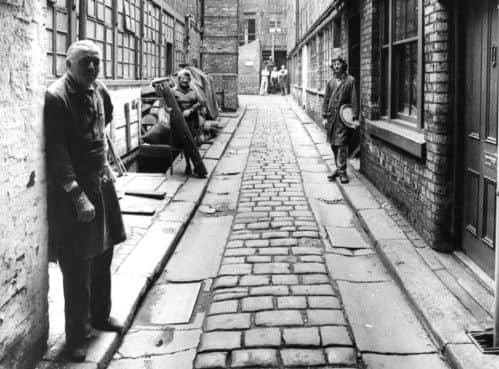Yorkshire at risk: Stark reminder of Hull’s blitz


As the comedy antics of The Great Dictator enraptured the audience, they were entirely oblivious to the devastation soon to be caused by the subject of this parody.
Until the air-raid alarm sounded.
What had been a brief distraction in a country caught up in conflict brought the horrors of war directly to the doorstep of cinema-goers at National Picture Theatre on the night of March 18, 1941.


Advertisement
Hide AdAdvertisement
Hide AdThe traumatised crowd of 150 people were forced to shelter in the foyer of the elegant Edwardian building.
The fact that there were no fatalities seems almost unbelievable. But what is perhaps more difficult for the cinema’s legion of admirers to understand is how such a significant building has been reduced to rack and ruin, standing derelict for 70 years.
“It is a unique survivor, there are so few bomb ruins left in this country,” said Craig McHugh, an advisor for English Heritage, which placed the grade II-listed cinema on its at-risk register several years ago.
Hull-based National Civilian World War Two Trust has designs on spent years campaigning to transform the building into a memorial to the 1,200 people were killed in the city during the Blitz.
Advertisement
Hide AdAdvertisement
Hide AdLast year the group secured a major milestone when the council has served a repairs notice on the current owner, done with the help of funding from English Heritage, after which the council could use compulsory purchase order on the current owner. This would allow the Civilian World War Two Trust to lease it from the local authority.
But even after the site is secured, a large amount of funding will be required to see restoration plans come to fruition.
Trust secretary Alan Canvess said: “There have been some high points and some low points over the past eight years, but it has generally been a period of frustration as we have spent a lot of the time fighting several of the owners planning applications we felt were unsuitable for the site.
“We’re very grateful that they has now decided to purchase the site, and lease it to us once successful. Unfortunately, the process is a relatively slow one, and this adds to our frustration.”
Advertisement
Hide AdAdvertisement
Hide Ad“This is a fairly rare case but we’re confident the funding will come through,” added Mr McHugh.
Another remarkable survival can be found not too far away, in Wressle, East Riding, where a grand manor house built as a testament to Sir Henry Percy’s superiority of rank became the home of generations of farmers.
Ever since it was built in the late 14th century, the castle, has endured no end of hardship.
When the English Civil War broke out, a committee in York gave the orders to dismantle it, and its role as a residency of Lords appears to have come to an end.
Advertisement
Hide AdAdvertisement
Hide AdWhat was once an impressive quadrangle with five towers then became a farm house.
But in 1796, when it was accidentally burnt to the ground by its occupier, leaving little more than shell, and the land became occupied by farmers.
It was bought in 1930 by a tenant and later inherited by his great-grandson and fellow farmer Robert Falkingham, who lives and works on the site of the ruins.
He raised the alarm with Natural England and English Heritage after he noticed an increasing risk of structural damage.
Advertisement
Hide AdAdvertisement
Hide Ad“I’d go and look and there’d be the odd brick that had fallen, he told The Yorkshire Post.
“I knew I needed to do something to save it. The men in my family haven’t paid much attention to it over the years but I think it’s wonderful, it has so much history.”
It was Natural England which provided funding to carry out urgent restoration work, which is almost complete.
While the site is not open to the public, Mr Falkingham is planning to host open days to allow visitors to see it for themselves.
READ MORE...